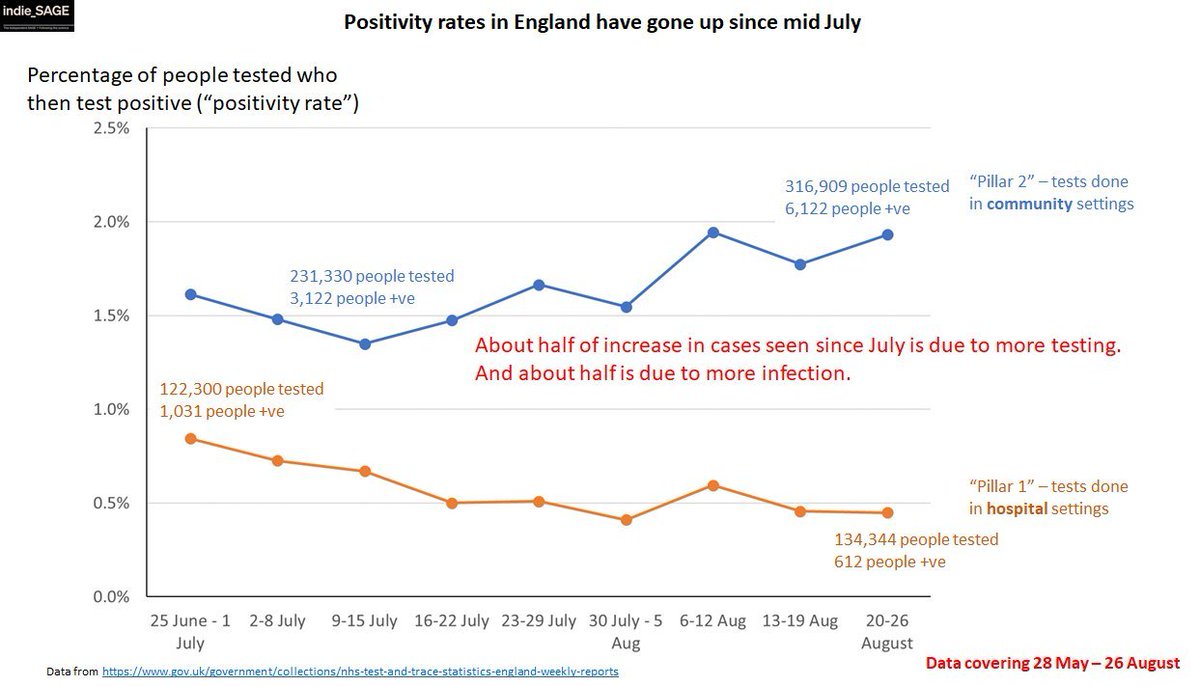THREAD: I have a big problem with how this @BBCNews article has been presented https://www.bbc.co.uk/news/health-54000629">https://www.bbc.co.uk/news/heal...
Firstly, the academic paper behind it (a review of best available evidence) is absolutely right to point out that PCR tests for COVID are very sensitive and can pick up traces of virus *after* someone stops being infectious.
E.g, you might be infectious for 7-10 days after symptoms, but test positive for COVID using PCR for maybe 20 days after symptoms. (occasionally longer but that& #39;s vv rare). (BTW this is NOT a classic "false positive", just a less useful one depending on why you& #39;re testing)
The authors are also right to point out that it would be better to report "amount" of virus detected alongside an overall result. How exactly to do this is a whole other issue I& #39;m not going to get into ( @ScienceShared has tweeted lots of good stuff on it). BUT
this is only an issue right now *if* lots of people a few weeks out from their COVID infections are getting tested. Is there any evidence at all that they are??
So what I have a big problem with is "the detection of traces of old virus could partly explain why the number of cases is rising while hospital admissions remain stable". The rise in cases currently is entirely driven by community tests "Pillar 2"
You get these tests by having *symptoms*. (research studies like ONS survey are reported in pillar 4 and are not included in the daily data). Who are these people getting tested 2 weeks later? And even if they were, then that& #39;s indicating more cases 2 weeks ago.
The masses of people who had COVID in March and April and are now recovered wouldn& #39;t be getting tested now in pillar 2 & even if they were, they are very very very unlikely to test positive. And if this *was* happening you& #39;d be seeing lots of stories about "reinfection".
In this BMJ piece https://www.bmj.com/content/370/bmj.m3374">https://www.bmj.com/content/3... the same author implies that asymptomatic people might be driving new cases. But how & why are they getting tested? Regular testing of hospital staff is pillar 1 and those cases have been declining. Pillar 2 is symptoms.
So basically, the fundamental point about PCR tests and thinking about sensitivity thresholds and better reporting of cases is totally valid. Trying to argue that this is behind the recent increase in cases is totally not.
Frankly, given there is COVID circulating at some level, restrictions have been massively eased over past 2 months, and what we are seeing in Europe and around the world, it would be amazing if we *weren& #39;t* seeing an increase in infections.

 Read on Twitter
Read on Twitter


